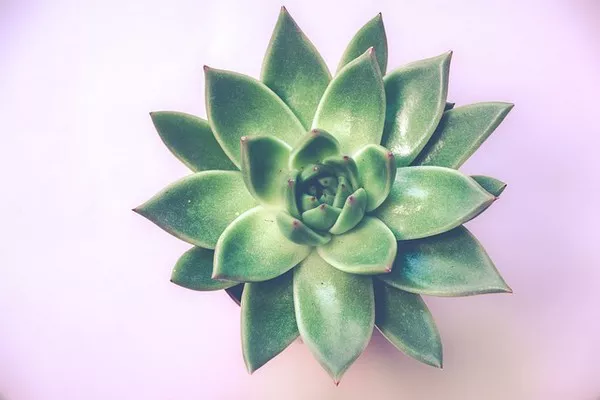Succulents have become increasingly popular among plant enthusiasts due to their unique appearance and relatively low maintenance requirements. While many succulent lovers opt to propagate these plants through cuttings or division, growing succulents from seeds can be a rewarding and fulfilling experience. However, planting succulent seeds requires a different approach compared to other types of seeds due to their unique characteristics and needs. In this comprehensive guide, we will walk you through the step-by-step process of planting succulent seeds to ensure successful germination and healthy growth.
Understanding Succulent Seeds
Before delving into the planting process, it is essential to understand the nature of succulent seeds. Unlike seeds of many other plants, succulent seeds are often tiny and require specific conditions to germinate successfully. Additionally, succulents are adapted to arid environments and have developed mechanisms to conserve water, which can affect their germination process.
Succulent seeds are typically housed in small, dry capsules or pods. These seeds may have specific germination requirements, such as light exposure, temperature, and moisture levels. Understanding the needs of the specific succulent species you are planting seeds from is crucial for successful germination.
Materials Needed
Before starting the planting process, gather the necessary materials:
1. Succulent seeds
2. Well-draining potting mix (preferably a mix designed for succulents or cacti)
3. Small pots or seed trays
4. Clear plastic dome or plastic wrap
5. Spray bottle for misting
6. Grow lights (optional but recommended for consistent light exposure)
Ensure that all materials are clean and sterilized to prevent the growth of mold or pathogens that could harm the succulent seeds.
Step-by-Step Guide
Follow these steps to plant succulent seeds effectively:
1. Prepare the Potting Mix: Start by filling small pots or seed trays with a well-draining potting mix. Succulents are susceptible to root rot if they sit in waterlogged soil, so it is crucial to use a mix that promotes good drainage. Avoid using regular garden soil, as it tends to retain too much moisture.
2. Sow the Seeds: Succulent seeds are tiny, so it is essential to handle them with care. Sprinkle the seeds evenly over the surface of the potting mix. Avoid overcrowding the seeds, as this can lead to competition for resources once they germinate.
3. Cover the Seeds: Succulent seeds require light to germinate, so it is essential not to bury them too deeply. Gently press the seeds into the surface of the potting mix using a clean fingertip or a small tool. Alternatively, you can lightly sprinkle a thin layer of fine sand over the seeds to help anchor them in place.
4. Provide Adequate Light: Place the pots or trays in a location where they will receive bright, indirect light. While succulent seeds require light for germination, direct sunlight can be too intense and may cause the potting mix to dry out too quickly. If natural light is insufficient, consider using grow lights to provide consistent illumination.
5. Maintain Optimal Temperature: Succulent seeds generally prefer warm temperatures for germination. Aim to keep the temperature between 70°F and 80°F (21°C to 27°C) during the germination period. You can use a heating mat to provide consistent warmth if necessary.
6. Keep the Soil Moist: While succulents are known for their drought tolerance, succulent seeds require consistent moisture to germinate. Use a spray bottle to mist the surface of the potting mix regularly, keeping it evenly moist but not waterlogged. Avoid overwatering, as this can lead to rotting or fungal issues.
7. Cover for Humidity: To help retain moisture and create a humid environment, cover the pots or trays with a clear plastic dome or plastic wrap. This will also help maintain consistent humidity levels around the seeds, promoting successful germination.
8. Monitor for Germination: Succulent seeds can take anywhere from a few days to several weeks to germinate, depending on the species and environmental conditions. Keep a close eye on the pots or trays, checking regularly for signs of germination such as tiny seedlings or green sprouts.
9. Transplanting Seedlings: Once the succulent seedlings have developed several true leaves and are large enough to handle, they can be transplanted into individual pots or containers filled with well-draining potting mix. Handle the seedlings carefully to avoid damaging their delicate roots.
10. Provide Careful Care: After transplanting, continue to provide the seedlings with bright, indirect light and water sparingly, allowing the soil to dry out slightly between waterings. As the succulents grow, you can gradually increase the frequency of watering, but always err on the side of underwatering rather than overwatering.
By following these steps and providing the proper care, you can successfully grow succulents from seeds and enjoy watching them thrive and mature over time. While the process may require patience and attention to detail, the rewards of growing succulents from seeds are well worth the effort. With the right conditions and care, you can cultivate a diverse collection of beautiful succulent plants to adorn your home or garden.
Conclusion
Planting succulent seeds can be a rewarding and enjoyable experience for plant enthusiasts. By understanding the unique needs of succulent seeds and providing the proper care and conditions, you can successfully germinate and grow these fascinating plants from seed. Whether you are a seasoned gardener or a novice plant lover, growing succulents from seeds offers a satisfying way to expand your collection and appreciate the beauty of these resilient and adaptable plants. With patience, attention to detail, and a bit of luck, you can cultivate a thriving garden filled with a diverse array of stunning succulents grown from seed.


